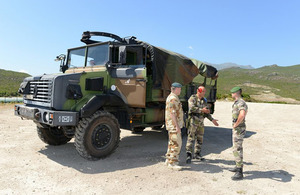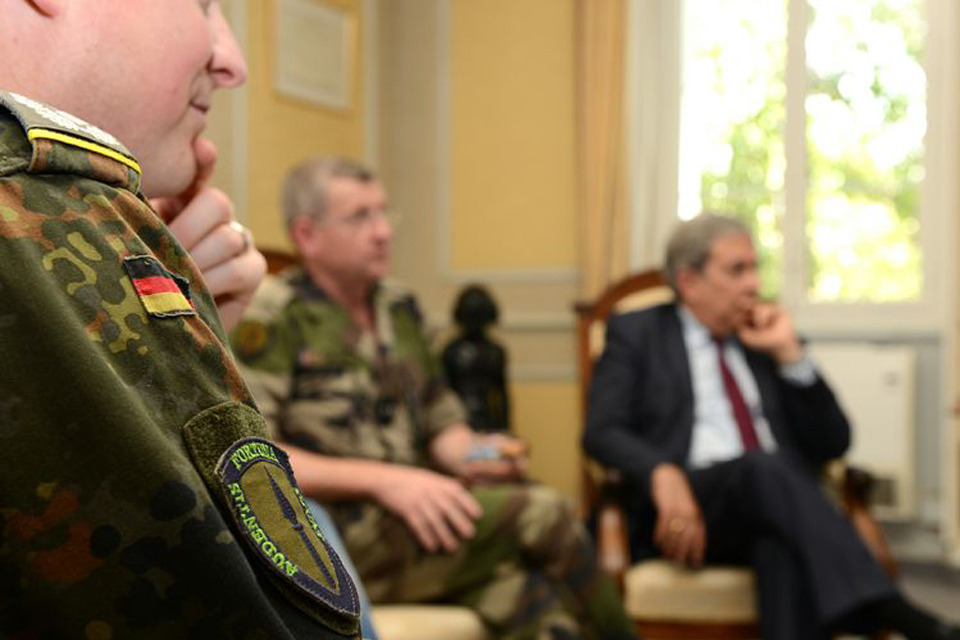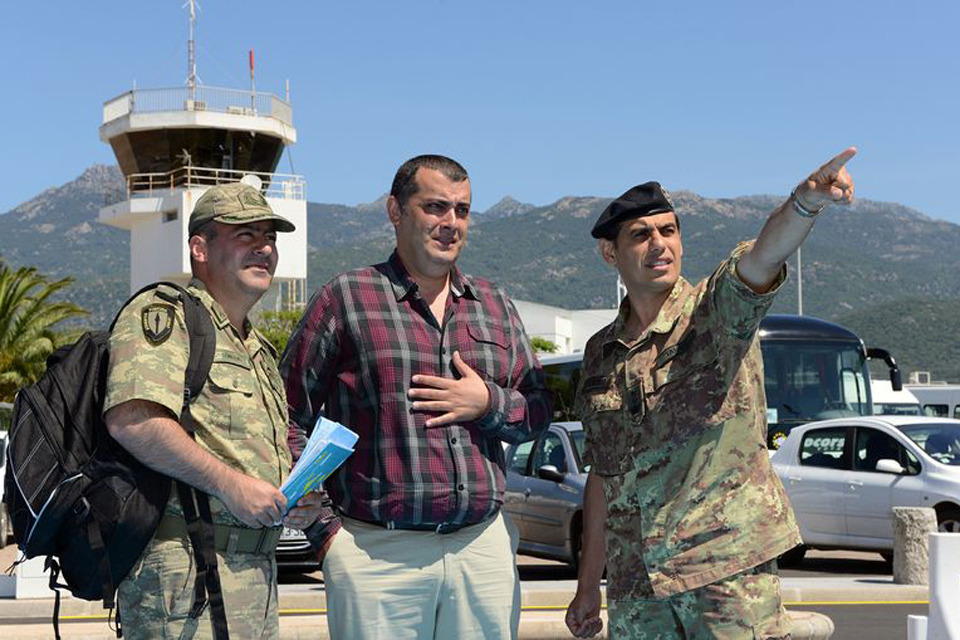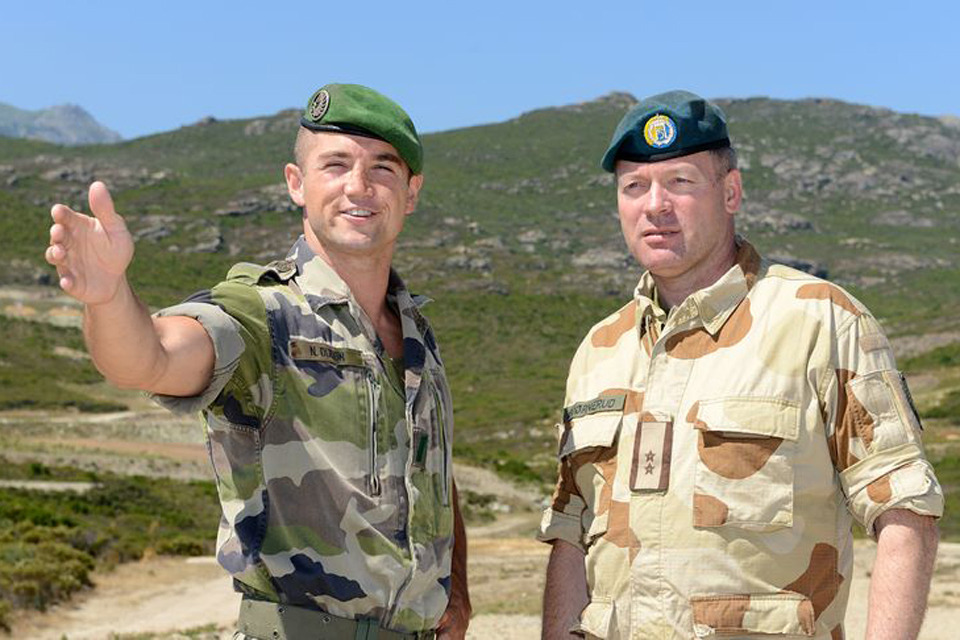Allied Rapid Reaction Corps personnel learn valuable lessons in Corsica exercise
Troops assigned to NATO's Allied Rapid Reaction Corps completed the first part of a rapid deployment exercise in Corsica this weekend.

Multinational troops from HQ ARRC taking part in Exercise Arrcade Deployex 13 [Picture: Crown copyright]
Close to 40 multinational troops took part in Exercise Arrcade Deployex 13 at the weekend, but the exercise is far from over however, as more than 100 troops from Gloucestershire-based Headquarters Allied Rapid Reaction Corps (HQ ARRC) continue their training at Solenzara Air Base throughout the rest of this week, returning home to the UK on 21 June.
Remaining in Corsica are troops assigned to HQ ARRC’s enabling command (EC) and forward main elements, who will continue the work begun by the command’s Operational Liaison and Reconnaissance Teams (OLRTs), most of whom deployed to Corsica on 10 June.
One OLRT leader, Lieutenant Colonel Dag Bjornerud, an army officer from Norway, expressed his satisfaction with the exercise. He said:
We’ve had a very successful experience in Corsica. The local authorities and people have been very friendly, open-minded and easy to co-ordinate with. We’ve experienced and learned a lot.

Multinational troops from HQ ARRC taking part in Exercise Arrcade Deployex 13 [Picture: Crown copyright]
HQ ARRC has 4 OLRTs consisting of 6 personnel, including a team leader, 2 communications officers and 3 specialists (engineers, logistics experts, etc); each team has been augmented in Corsica with interpreters, either from the local area or from the French Foreign Legion.
Designed to deploy in advance of the rest of the headquarters, the OLRTs are given a set of requests for information, or RFIs, before they depart. Upon arriving in theatre, they must find answers to all of these questions, particularly those that involve the movement of troops, equipment and supplies into the country.
Using state-of-the-art satellite communications kit, the OLRTs travel around the area, completing recces of sea and air ports and roads, as well as meeting with administrative and political leaders. They then make assessments that are forwarded directly back to HQ ARRC’s commander and his staff.
In Corsica, this has meant many long days driving around the mountainous Mediterranean island for OLRT personnel.

Multinational troops from HQ ARRC taking part in Exercise Arrcade Deployex 13 [Picture: Crown copyright]
Lieutenant Colonel Bjornerud explained:
The terrain and roads have been challenging. Corsica has given us a good awareness of potential challenges we could find on a real operational deployment.
Ultimately, the OLRTs complete the commander’s picture of the country and/or region his troops are preparing to deploy to, ensuring that no detail is left to assumption.
Lieutenant Colonel Bjornerud said:
It’s critical that we make the right conclusions. You have to be on the ground in order to gain that kind of knowledge – you can’t read about it in a book.
Exercise Arrcade Deployex 13 is being directed by Supreme Headquarters Allied Powers Europe, the military arm of NATO.
The exercise is designed to simulate a real NATO Response Force (NRF) deployment, at the beginning of which HQ ARRC would traditionally deploy its OLRT and EC elements in advance of the rest of the headquarters in order to get everything ready and co-ordinate logistics and transportation needs before the rest of the multinational headquarters deploys.
This exercise mirrors what HQ ARRC would do if called on by NATO to deploy in a real-world scenario.

Multinational troops from HQ ARRC taking part in Exercise Arrcade Deployex 13 [Picture: Crown copyright]
HQ ARRC is a NATO rapid deployment corps headquarters which was founded in 1992 in Germany; it has been headquartered in Gloucestershire since August 2010.
Although HQ ARRC’s ‘framework nation’ is the United Kingdom, comprising approximately 60% of the overall staff, the ARRC is fully multinational in nature and organisation, with 15 partner nations contributing the remaining complement of personnel (Belgium, Canada, the Czech Republic, France, Denmark, Germany, Greece, Italy, the Netherlands, Norway, Poland, Portugal, Spain, Turkey and the United States).
HQ ARRC is now on standby for short-notice call-up and subsequent rapid deployment in support of any potential NATO NRF missions that may develop.
As an NRF Land Component Command, or LCC, HQ ARRC would essentially be in command of all land combat troops on the ground during an NRF deployment.